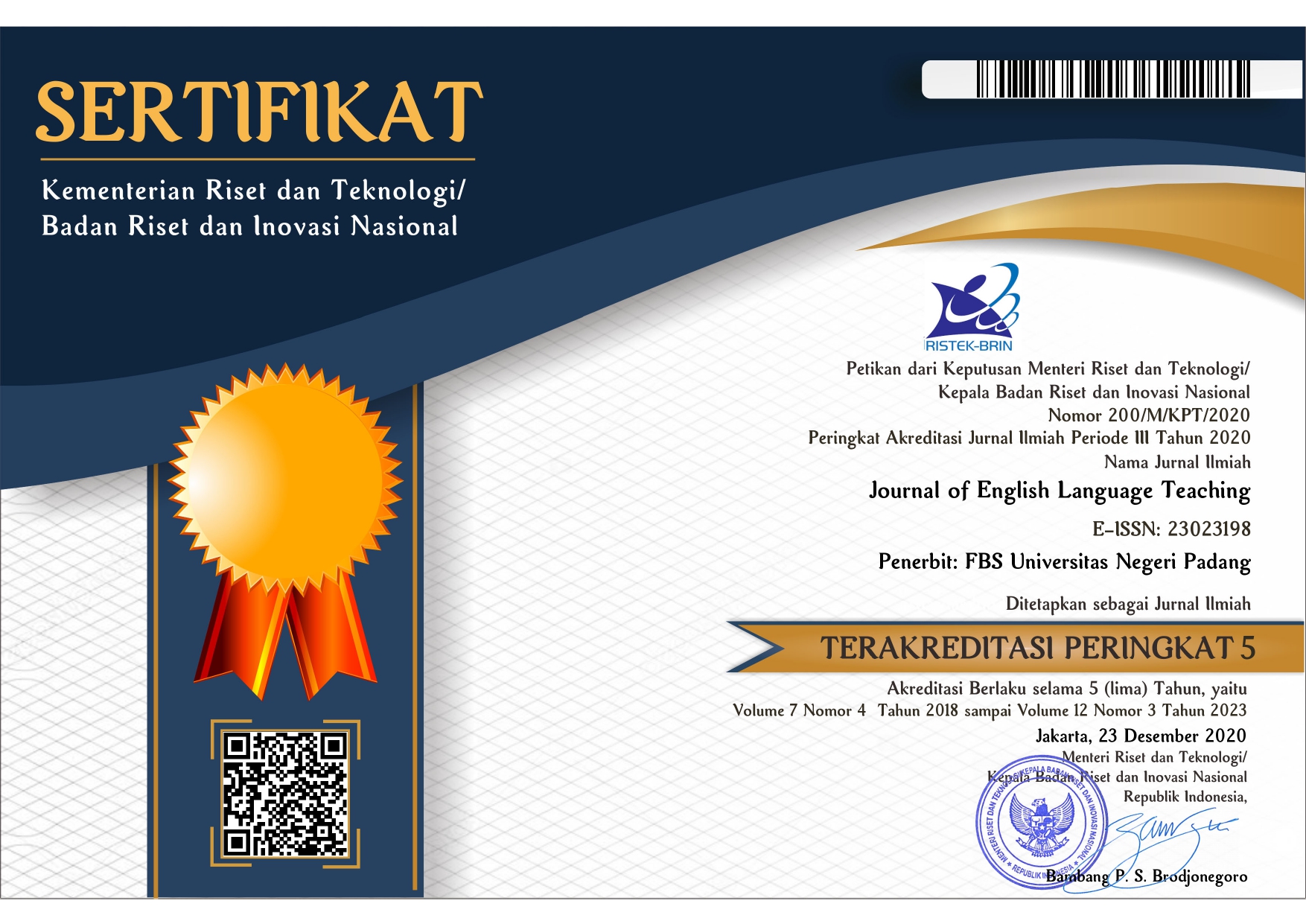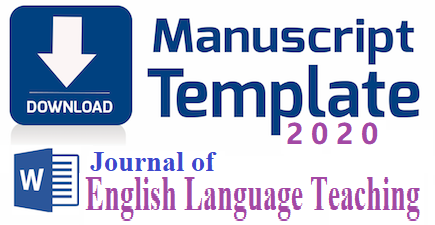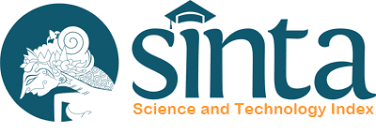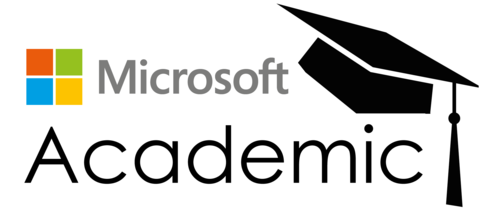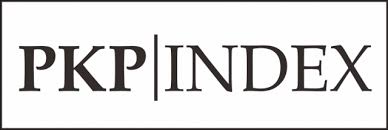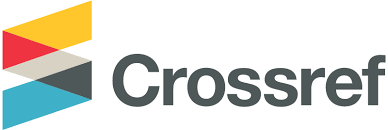Using Information Gap Activity in Classroom Interaction to Advance the Students’ Speaking Ability
 ), Ratmanida Ratmanida(2),
), Ratmanida Ratmanida(2), (1) FBS Universitas Negeri Padang
(2) FBS Universitas Negeri Padang
 Corresponding Author
Corresponding Author
Copyright (c) 2018 Journal of English Language Teaching
DOI : https://doi.org/10.24036/jelt.v7i1.9736
Full Text:
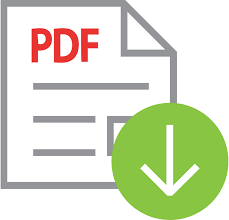 Language : en
Language : en
Abstract
Speaking is one of the language skills that prioritized in education curriculum at junior high school level (SMP) in Indonesia. However, there are still many students who have difficulty in speaking. This is due to the way teachers that teach ineffective and less varied, so that students are less motivated to interact with teacher or with other students in the classroom. Therefore, many techniques have been developed by educational experts to assist teachers in creating effective and efficient ways of learning. One of them is teaching speaking by using “information gap activity”. The use of this technique is expected to facilitate and motivate the students in improving their interaction in the classroom and also improve their speaking ability. This technique is used during the experimenting phase to help the students engage in fun conversation. By using this technique, students are expected to be able to speak actively inside or outside the classroom.
Keywords
References
Allwright, D. (1996a), "Social and pedagogic pressures in the language classroom: the role of socialisation", in: Coleman, H. (ed.), Society and the Language lassroom. Cambridge: Cambridge University Press.
Allwright, D. and Bailey, K. M. (1991), Focus on the Language Learner. Cambridge, Cambridge University Press.
Bastrukmen, Helen. 1994. “Using learners’ writing for oral information gap activities English Teaching Forum. 39,4:50-53.
Brown, H. D. (2001). Teaching by Principles: An Interactive Approach to Language Pedagogy, 2nd Edition. New York: Longman.
Doughty, C., & Pica, T. (1986). Information gap tasks: Do they facilitate second language acquisition? In Pica,T. ,Kang,H.S.& Sauro,S.(Eds,). Information gap task : Their multiple roles and contributions to interaction research. Cambridge: Cambridge University Press.
Johnson, K. and K. Morrow. eds. 1981. Communication in the classroom. London: Longman
Khatimah, Yuli, Asep Gunawan, and Siti Wachi. 2014. Bahasa inggris when english rings a bell.Jakarta: Pusat Kurikulum dan Perbukuan, Balitbang, Kemdikbud
Liao, X. (2001). Information Gaps in Communicative Classroom. Retrieved from http://exachanges.state.gov/forum/vols
Nunan, D. (1991). Communicative Task and the Language Curriculum. TESOL Quarterly, 25(2), pp279-295.
Paakki, Henna (2013). Difficulties in Speaking English and Perceptions of Accents A Comparative Study of Finnish and Japanese Adult Learners of English. Findland: University of Eastern Finland.
Raptou, Violet. 2001.Using Information Gap Activities in the Second language Classroom. Canadian Association of Second Language Teachers. http://www.caslt.org/
Richard, J.C. (2008). Teaching Listening and Speaking: From Theory to Practice. Cambridge: Cambridge PressUniversity.
Thornbury, S. (2005). How to Teach Speaking. Essex: Pearson Education Limited
Watamni, Kazeem. & Gholami, Javad. 2012. The effect of implementing information-gap tasks on EFL learners‘ speaking ability. MJAL 4:4 Spring
http://esl.yourdictionary.com/esl/esl-lessons-and-materials/fun-information-gap- activities-for-esl-learners.html
https://en.islcollective.com/resources/printables/worksheets_doc_docx/info_gap_personal_info/personal-information-beginner/22275
 Article Metrics
Article Metrics
 Abstract Views : 2530 times
Abstract Views : 2530 times
 PDF Downloaded : 681 times
PDF Downloaded : 681 times
Refbacks
- There are currently no refbacks.
Copyright (c) 2018 Journal of English Language Teaching

This work is licensed under a Creative Commons Attribution-NonCommercial-NoDerivatives 4.0 International License.

